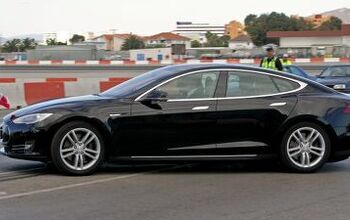QOTD: Should People Reclaim the Streets?

I took a little bit of time this week to read this piece in The Atlantic that advocates for urban and suburban residents to close off local streets to cars, at least some of the time, in order to foster better relationships among locals.
Even as a committed car guy, I have to admit that the idea isn't terrible. Maybe it's because I grew up in an era where our lives as children wasn't super structured -- we could walk to the nearest park and we didn't have play dates. We just checked to see if our friends were free and if we could come over. We even did play in the street -- mostly street hockey, moving the goal when a car came. Just like in Wayne's World.
That said, while there definitely appear to be social benefits from making it easier for kids and their parents to congregate in the street, the folks who advocate for such things sometimes forget to factor in downsides. Such as how closing one street to create a pedestrian-friendly place can wreak havoc with traffic a few blocks over.
Infrastructure is a tricky thing. I love cars and I love driving, but I must admit that making too much of our suburban and urban infrastructure too car-centric has caused societal, if not environmental, problems. On the other hand, going too far in the other direction could cause unintended consequences.
I live in the city so I can have transit options -- I can drive, walk, take an Uber, take the bus, bike, or take the train. I like that my neighborhood is walkable -- one of the worst parts of living in the 'burbs was firing up the car to drive to the store and then killing the engine before it could even warm up, since the store was so close. Yet walking to the store wasn't a realistic option.
Conversely, I've been caught in some traffic snarls when a relatively lightly traveled side street shuts down for a block party.
I find myself drawn to places that are walkable without making driving from point A to point B difficult, and the social benefits described in the Atlantic piece seem real.
So my question to you is, how can we re-shape our infrastructure to improve life for pedestrians, playing children, and cyclists, without going too far and squeezing the flow of automotive traffic?
Sound off below.
[Image: Ivan maguire/Shutterstock.com]
Become a TTAC insider. Get the latest news, features, TTAC takes, and everything else that gets to the truth about cars first by subscribing to our newsletter.

Tim Healey grew up around the auto-parts business and has always had a love for cars — his parents joke his first word was “‘Vette”. Despite this, he wanted to pursue a career in sports writing but he ended up falling semi-accidentally into the automotive-journalism industry, first at Consumer Guide Automotive and later at Web2Carz.com. He also worked as an industry analyst at Mintel Group and freelanced for About.com, CarFax, Vehix.com, High Gear Media, Torque News, FutureCar.com, Cars.com, among others, and of course Vertical Scope sites such as AutoGuide.com, Off-Road.com, and HybridCars.com. He’s an urbanite and as such, doesn’t need a daily driver, but if he had one, it would be compact, sporty, and have a manual transmission.
More by Tim Healey
Latest Car Reviews
Read moreLatest Product Reviews
Read moreRecent Comments
- SCE to AUX Wow - just the thing for that special buyer with discriminating taste.
- SCE to AUX I'd drive this. Corrected for inflation, this 25 Kicks is the same price as my 05 Scion xB. The xB had a Spartan interior and very light construction; this is much more car for the money.
- MrIcky 100% a 'play stupid games, win stupid prizes' issue here.
- Wolfwagen Am I the only one who thinks that this car should be saved and resto-moded with an early 2000's VTEC? Perhaps go a little crazy and swap in the power train from an S2000?
- Ger65690267 Well, the TFL guys who have a Cybertruck with even more miles have noted their tires still look fine. They drive all sorts of terrain and situations, and they haven't seen the wear, which means that guy is running his truck probably rather hard more than he cares to admit.

































Comments
Join the conversation